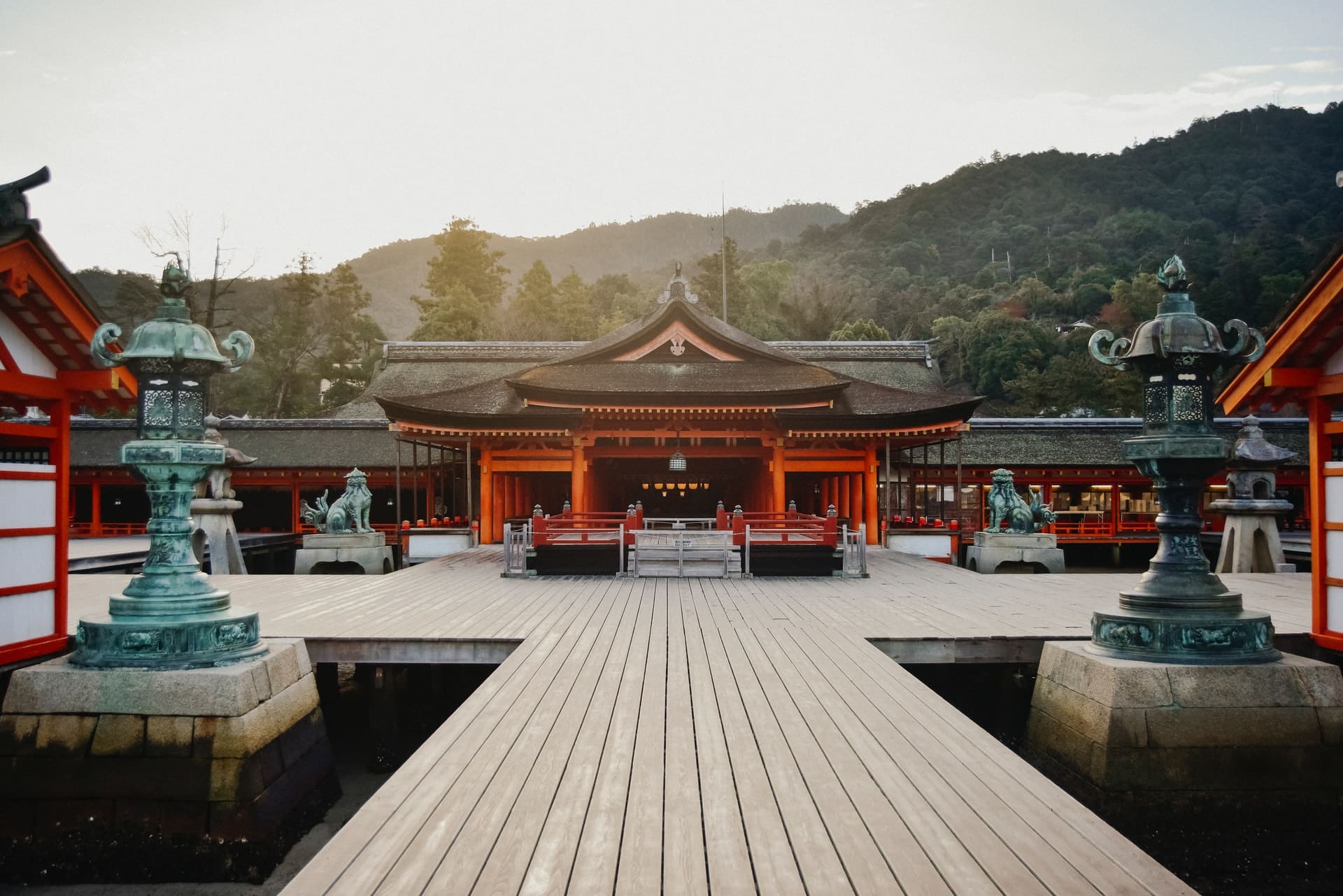I am writing this article several months after my visit to Hiroshima, but the feelings it arose in me are still very strong.
Kyoto
We are in Kyoto, with still many things to discover around us. Japan’s spirituality suffers the dull colours of winter, but it’s still very charming and lively: we are in the first week of the new year and the temples are crowded by pilgrims from all over the country.
How can we be in Japan and not going to see such a significant place as Hiroshima? So we take a look a the itinerary of Shinkansen – the Japanese high speed trains – and decide for a double trip in one day: Miyajima island and the memorial in Hiroshima.
Miyajima island
Miyajima is well renown for spirituality and folklore. It is said that the inventor of spoon was born here… and for a folk eating with sticks this has great importance!
The city is always crowded with pilgrims in line for the religious sites, so that they are almost closed off to people like us with little time. We decide to walk along the island’s perimeter among games and food stands, people and deers, which are sacred as in Nara and live peacefully among the inhabitants.
We enjoy the beautiful weather and take a moment to admire the torii in the water of Itsukushima-jinja. Bright red, this monument has a changing appeal according to the tide, but especially fascinating is the arrival by boat of the pilgrims.
After lunch we take the ferry and head towards Hiroshima. Our aim is the Peace Memorial Park (Heiwa Kinen Kōen) and after some issues with the bus lines we get to it through the city centre.
Hiroshima
Hiroshima seems no different from any Western town. Still, while my eyes browse this normality, my mind is busy connecting the information I have about it, the excruciating explosion, the pain, the loss, the absurdity of violence. It comes to my mind how at school they used to show us the mushroom cloud, how we used to fear the nuclear war. And now here I am, my feet on the very ground where the bomb deflagrated, trying to make a picture of what I read and heard. My journey wouldn’t have been complete without coming here.

The Peace Memorial is just a few metres from the bus stop. The light is wonderful, it doesn’t seem like winter. The sun stretches its warm colour everywhere, the flat square where the monuments are located allows to spot the A-bomb Dome in far distance.
We walk. Our senses are looking for something, not an explanation for what happened – there is no valid explanation – but the traces of the many people who lost everything in such a cruel way.
I hear the sound of a bell but I can’t figure out where it comes from. We get closer to the monument where all the victims’ names are recorded. There are flowers beside the list. My eyes wander in the almost anonymous sequence. Behind every name, dreams, lives, relationships, all lost with merciless violence.
The flame of peace sparkles on a side, it will be blown out only the day the last nuclear weapons will be destroyed. I can’t help to think ‘you will always sparkle… unfortunately’.
The monument for children’s peace
The monument for children’s peace is among the most touching sights. It celebrates Sadako Sasaki, a child who died of leukemia a few years after the bomb. Sadako was eleven when, sick and with a death sentence pending on her, she decided to make one thousand cranes of paper, a symbol for longevity, but her illness stopped her before she could finish her work. To remember her the Japanese children prepare every year wallpapers with crane shaped origamis.
We arrive at the A-bomb Dome. The building was originally intended as an industrial exposition centre and is one of the few things left of old Hiroshima. The old houses war all wooden made and didn’t last after the explosion. The people who were inside the building died, but their bones were left here.
We walk by, stop, stretch our gaze between the ruins and the sky. It’s a sad feeling, but without this experience our imagination would have never grasped the full intensity of the tragedy. All is wasted, brutalized, deformed, burned. The concrete made to ashes, the broken windows. Everything is a warning, a reminder of the people, men and women, children and elders, who were could do nothing but go in ashes without even the time to surrender.

Then we enter the Museum of Peace. Here the documentaries, files and items which survived the blast recall political reasons and urban life. The daily use items are shapeless, melted, deprived of identity. Thinking of who were using them urges a feeling one can not explain by words.
We walk back to the train station, my eyes turn to this place until it disappears behind the horizon. I leave Hiroshima with a mental and emotional picture I will never forget.




